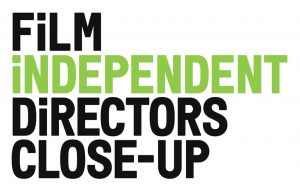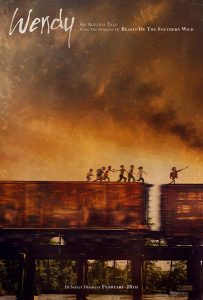2020 Director’s Close Up: Week Five

The final week of Film Independent’s five-week-long Director’s Close Up focused on one of the most crucial aspects of cinema, an aspect that easily makes up half of the movie-going experience, an aspect that the viewer rarely notices, but exists across nearly the entire run time of every film ever made. That aspect? Sound design and scoring. Benh Zeitlin, director of Wendy, and Dan Romer, composer of Wendy, unveil the massive impact of cinematic sound.
Sound design involves the process of creating naturally occurring noises anyone would hear in the real world. This can include footsteps, creaking floors, squeaking doors, rustling leaves and far more. Even though such additions may seem minuscule in the long run, they have a tremendous impact on how realistic the cinematic world feels. Imagine watching Star Wars without the wooshes of TIE fighters, the hums of pod racers, or the buzz of lightsabers? The film would lose many of its immersive qualities. So, director Benh Zeitlin puts careful attention into sound design. As an example, in his previous film, Beasts of the Southern Wild, the sounds of Hurricane Katrina can be heard with the growling wind, the shrieking shaking shutters and the pounding rain. While very little rain or lightning appears on the screen, the audience feels terrified by the audible aspect of the hurricane. Such elements can also help keep the budget to a minimum as rain machines and lightning visual effects can increase the cost of production dramatically, but taking out a microphone and recording a thunderstorm has a near-zero price tag.

Composer Dan Romer does a similar job with the score of a film, a lengthy musical work that helps guides the emotional tone of certain scenes as well as the entire story. For Wendy, because it re-imagines the classic Peter Pan story of children who never grow up, the score mimics a child’s perspective. That means that it must be epic and orchestral when the children do seemingly minor things, like play in the mud or chase each other. Zeitlin stated that he took inspiration from his own childhood when he would mentally play the grand Indiana Jones soundtrack while he did the small task of looking for an ant in the grass. Dan Romer also tried to mimic a local band in the instrumentation of the orchestra, by having a mix of traditional symphonic orchestral instruments and instruments found in smaller bands such as steel drums. This gives it a grounded feeling that agrees with the world the children come from. Music can also reflect tone shifts in the film. In the beginning, when the story takes place in the normal world, the music has a searching, almost wanting quality. Yet, once it goes to the magical world of Neverland, it explodes in triumph. At times, assembling an entire orchestra can be outside of a film’s budget. So, Romer hired and recorded individual musicians and combined their performances on a computer. This allowed the entire film score to require only nine musicians and a small room, versus a dozen or more musicians and a symphony hall.
Sometimes, score and sound design merge as it does in Wendy, when the audience meets a large sea creature called Mother. This involved so many layers of sound design that the production of Wendy hired a sound designer from Animal Planet to create whale noises for the creature. On top of the sound design, Romer composed an ambient score that adds to the grandeur of the creature being displayed on the screen. Such challenges can require unconventional methods. For example, the score utilizes whirly tubes, a children’s toy that makes a humming sound when spun. This, on top of the whale sounds, creates a mysterious but peaceful atmosphere around the sea creature.
While it receives little attention in award shows, critiques or from the average moviegoer, the sound and score of a film make up half the experience. Benh Zeitlin said it best, “it’s impossible for the film to speak in any way” without the sound to assist in communicating the character’s perspectives, emotions and tone.
Wendy opens in theaters on February 28, 2020. For more information on Film Independent, go to https://www.filmindependent.org/
If you are interested in more information on sound in cinema, check out my interview with Midge Costin, director of the documentary Making Waves: The Art of Cinematic Sound at https://youtu.be/zvlChCb138Y
By Gerry O., KIDS FIRST! Film Critic, Age 17


